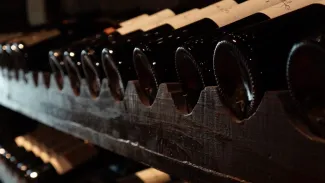Is your wine cellar properly insured?
Oh no, my château Petrus 2009 has gone...! Have you ever woken up in the middle of the night, haunted by this idea? If so, it may be time to check your cellar insurance.

Oh no, my château Petrus 2009 has gone...! Have you ever woken up in the middle of the night, haunted by this idea? If so, it may be time to check your cellar insurance.
Theft, fire or flood... The risks incurred by your wine cellar are, in theory, covered by your home insurance. Clothes, furniture, computers, appliances and great vintages ...
The contents of your cellar are insured just like all your other possessions. But if you have a nice stock of vintages at home, it may be wise to check whether it is properly insured, at its correct price.
You should never put water in your wine and certainly not in a Grand Cru. Which leads us to the important question of whether you are insured in the event of a flood.
Because unlike theft or fire coverages, the flood coverage is not automatically included in your home insurance.
However, in the event of heavy rain and rising water, cellars and basements are the first parts of your house to be affected and your bottles can be severely damaged.

When you take out your home insurance policy, you estimate the total value of your items. On average, this comes to 40 000 euros for an apartment in Luxembourg and about double that for a house.
But what has happened since? How many of your grands-crus have been drunk? How many new bottles have found a home in your wine racks?
Being up to date on the value of the insured property is not always easy if there’s a lot of coming and going in your cellar.
Keep a cellar book - in paper or paperless form - it could well inspire you to increase the ceiling of your home insurance if the value of your cellar has been creeping up over the years. Because remember that, in case of an incident giving rise to reimbursement, the insurer can tolerate a 10% increase on the amount of property declared, rarely more.
If you’re a dab hand with a smartphone, you can opt for specialised applications such as Ploc or Vinocell for a more entertaining way of keeping track of your cellar. But having an up-to-date inventory is not enough.
In the event of a claim, you will need to submit purchase invoices. In this case, it is advisable to scan them because it is not uncommon that these printed documents become almost unreadable over time. Photographing your cellar regularly is also a good reflex.
Immortalise each rack and add a few broad shots of the room. In the event of an incident, these photos can be presented as proof alongside the invoices and the cellar book. For example, they can be used to prove that your 2009 Château Pétrus was still there last month!
The value used to compensate you for the loss of your bottles is the value on the day of the loss within the limits of the cover amounts that you have defined in your contract. (and that you can adjust...)
"Prestigious bottles" worth more than € 2,500 are considered as valuables for insurance purposes.
So the claim will be entrusted to an expert specialised in wine prices, who will be tasked with estimating the market value of the wine.
For cellars worth more than 45,000 euros, it is preferable to take out a specific insurance policy. An "all risks" contract, which has the same characteristics as the insurance contracts dedicated to works of art.